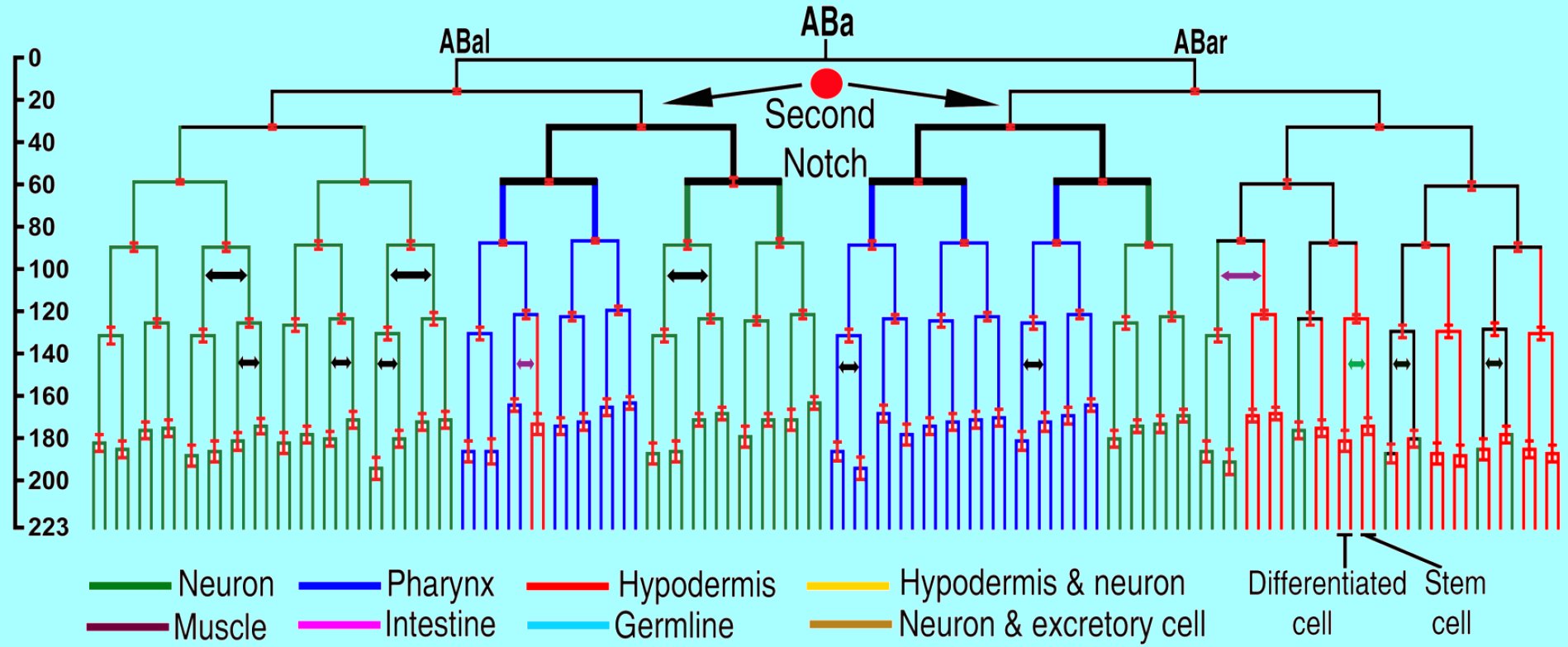
We have collaborations with biologists to study the cell division and lineage tree of the worm Caenorhabditis elegans (C. elegans). During cell division, image sequences across different depths are recorded. Our task is to analyze the 4D cell image data (3D video). Computational work includes cell segmentation, tracking and visualization, gene expression analysis, network inference, and understanding the mechanisms of cell-cell communications.
Cell division is a critical process for life. Each human or animal is grown from a single cell, a fertilized egg. This cell will divide into two daughter cells, which will then divide as well. Amazingly, after many generations of cell division, human/animal organs and the body will be formed automatically. This process can be described as a lineage tree shown above, for C. elegans as the model organism.
During cell division, the cells "know" when they should divide, where they should move to, and how to communicate with other cells. In this research, we aim to understand cell division timing, cell movement, gene expressions, and cell fate. These tasks require us to identify the cells in the video data, track them, and determine the parent and daughter cell relations. By analyzing gene expression data, we can investigate gene functions and the gene regulatory network.